Could flip phones make a comeback?
Flipping back to the future
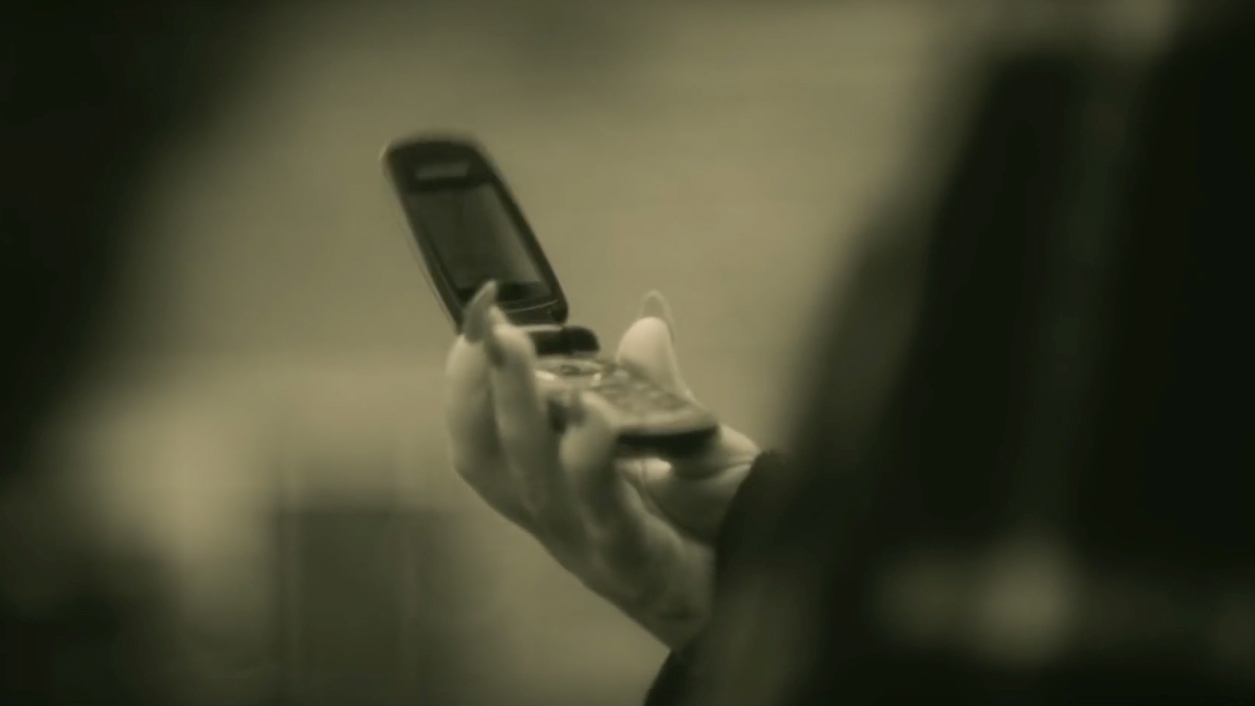
Phone design is at something of a low point, an ebb rather than a flow. Though hundreds of smartphones are released and tens of millions are sold every year, most follow the same aesthetic. A sheet of toughened glass is glued to a metal/plastic rectangle.
Ten years ago, things were different. There was no shape that phones were expected to be, there was a relative variety of different form factors, each aimed at a different kind of consumer. And of these, the flip phone had a certain something that elevated it above the rest.
These were devices that were not only practical, but that had a real cool factor as well. Though they were tools, they were also ‘fashionable’ in a way that many modern smartphones have failed to be.
As such, we found ourselves wondering: could the flip phone form factor make a comeback?
The phablet question
Since the birth of the flip phone, the use case for the average handset has changed drastically. Dumb phones have given way to smart ones, and for some people a phone will be the only ‘smart’ device that they own.
As such, phones have ballooned in size over the years, so that buyers can better use these devices as the computers they’ve become.
But this change doesn't rule out flip phones, as more screen doesn't have to mean a bigger screen; rather than making the device itself bigger, manufacturers could instead add an extra screen.
Get the best Black Friday deals direct to your inbox, plus news, reviews, and more.
Sign up to be the first to know about unmissable Black Friday deals on top tech, plus get all your favorite TechRadar content.
Cramming two large screens into a device has been attempted in the past though, and examples such as the Sony Tablet P and Kyocera Echo have shown this to be difficult to execute well.
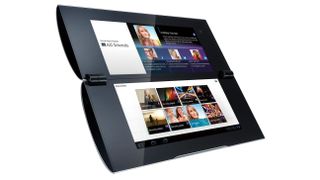
Modern hardware and battery limitations make one display hard enough to run, let alone two, with each of these examples having truly mediocre battery life, while also being rather heavy.
When the flip phone form factor was first dreamed up, the reality of hardware design was significantly different to what it is now.
When your only real need was texting and calling, all that was necessary was a number pad, an antenna and a small low-resolution screen for displaying basic information.
Now, in addition to larger screens, there are the various sensors that need to be included, relatively big processors, increasingly large cameras and more. Although miniaturization has come a long way since the mid-1990s, it is still difficult to cram so many high-end components into a tight chassis.
Keeping things small while also keeping them usable is no easy task.
Adding a hinge and a second screen to the design doesn't help matters at all. Plus, there are the issues of heat dissipation, durability and more. Keeping things small while also keeping them usable is no easy task.
This lack of space also has serious consequences for another major area: battery life. Modern devices are already plagued by incredibly poor battery life in many situations, with power-hungry screens and processors demanding every available scrap of energy. What would once last a week now barely lasts a day in most cases.
And that's with just one screen. Cramming in the power pack necessary to supply two screens, plus the energy-hungry components that today’s consumers demand, without making the phone enormous, is likely too much of a task for R&D teams that would far rather do something simple, and profitable.
There's more than one way to flip a phone
This is all based on the idea that a flip phone would require two screens to work however, but a simple solution is to make a device that keeps the smarts, but drops a second screen for a number pad.
Released in late 2015, the LG Wine Smart is an internationally available ‘smart’ device that does exactly that, though with a combination of Android 5.1, 1GB of RAM and a Snapdragon 210 processor, it is hardly a power champion.
More importantly, the single screen is a 3.2 inch 480 x 320 affair, which is unlikely to win any awards for resolution. It is enough to run a few WhatsApp chats, and surf the web, but not capable of anything resource intensive.
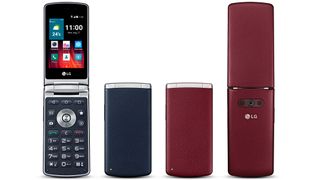
If flip phones are intended to be three things: cool, practical and affordable, the LG Wine Smart ticks two boxes. However, to truly recapture the heyday of the form factor, a modern flip phone would have to be a little more powerful.
That isn’t to say that the LG Wine Smart doesn’t have its place though, and with number pad-clad flip phones on the rise in Japan, there may be some scope for the form factor in this price bracket.
There is a weakness to this design that holds it back from worldwide success however, one that a “two-screened” phone would leapfrog: buttons.
Ten years ago physical buttons were all the rage, but over the years the world has moved more and more to software keys, leaving space for larger screens.
It's not just that manufacturers don't make phones with buttons, the public also doesn't buy these handsets in any great number - as BlackBerry has learned.
Indeed, the overall evolution of phones has progressed to such a point that physical keys are gradually going to be eschewed altogether. Rumors point to the Galaxy S8 being 90% screen on the front, and the iPhone 8 could ditch the iconic "Home" button that has come to define iOS devices.
Minimalism is the keyword here, and it likely applies to screens as well. An extra screen may be seen as a gimmick or overkill by the public, just as extra buttons have frequently proven to be unwelcome.
Enter the fold
So what would a second screen be used for? The traditional flip phone design is simple, number pad at the bottom, screen to display information at the top. All an extra screen would do is complicate things.
Power users, looking to display as much information as possible, might be able to get some use out of it, but essentially gluing two phones together without a purpose solves no problems.
To really bring the form factor back, it would be on the shoulders of manufacturers and designers to bring something new to the table, and not just nostalgia. Innovation is key.
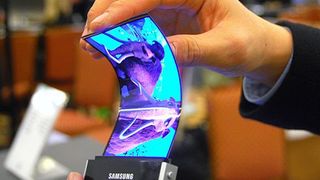
With this in mind, a solution does exist, at least partly: folding screens. Demoed for years, curved displays are now common on the likes of the Samsung Galaxy S7 Edge. Folding displays take this a step further, bending and twisting as required.
A folding handset with the flip phone form factor would allow for a larger screen, a distinctive look and a healthy dash of futurism.
Though this tech is likely still some way off reaching the mass market (the LG G Flex 2 is the only thing even approaching this at the moment), the potential is there.
The preserve of the 1%
Everything written here so far has hinged on one assumption: the flip phone is dead as a form factor. And for the most part, that’s true.
However, the design has enjoyed a strange afterlife over the last few years, becoming a mainstay of the luxury phone market.
These phones are the preserve of the uber-wealthy, the kind of person who looks at an iPhone 7 and thinks, “man, I’d buy that in a heartbeat if only it came studded with diamonds, you know – the poor-shaming kind.”
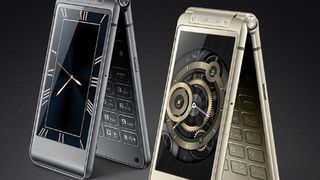
Somewhat surprisingly, it has been Samsung which has created and owned this most niche of niches, with its latest flip phone, the W2017, just around the corner and likely costing well over $2,000 (£1600/AU$2650) according to SamMobile.
Though lacking dual screens, this isn't lacking for power, as it comes with a 4.2-inch Full HD Super AMOLED display, a Snapdragon 820 processor, 4GB of RAM, 64GB of internal storage and a 12MP rear-facing camera capable of capturing 4K footage. In other words, everything expected of a 2016 flagship.
If this has you drooling in anticipation like a starving hound, the price isn't the only unfortunate news. Like every other entry in the series so far, the W2017 will only be released in China. Whether due to a proven demand for these handsets, or down to a simple quirk, the west will be bereft of expensive flip phones for now.
For those with more money than sense, these devices are perfect. For everyone else, a real modern, usable flip phone is still a distant pipe dream.
Flipping the book closed
So where does this leave the humble flip phone as a form factor? Is it possible that it could make a real comeback?
For now the answer appears to be a clear and definite “no”. Overcoming the technical hurdles, and finding a place for them in the modern world, would be hard enough, but in an industry that so relentlessly pursues the future, there is no time for the past. It is conventional knowledge now that what the public wants is big phones.
Foldable screens could be the answer, but Samsung (one of the pioneers of the tech) isn't sure there's a market for them, according to The Korea Herald. And that's an understandable outlook, given that many attempts at deviating from the norm have been met with failure.
Project Ara, once the byword for future potential, has been scrapped and the innovative LG G5 is failing to meet sales expectations.
Ten years ago, all that Joe Public wanted was to be able to make calls and text, and so all that a phone needed was a small antenna, a primitive screen, and a number pad. The form factors of the time evolved around these two factors, and as such the candy bar and the flip phone were born.
In a rare successful break from the established model the iPhone kick-started the trend for multi-touch input, and now a large touch-sensitive screen dominates the front of every handset, which is likely the way things will continue.
Beyond a few expensive devices released as fashion accessories for the very wealthy, the ideal of a modern flip phone is dead.
May it rest in peace.
Sean is a Scottish technology journalist who's written for the likes of T3, Trusted Reviews, TechAdvisor and Expert Reviews.
